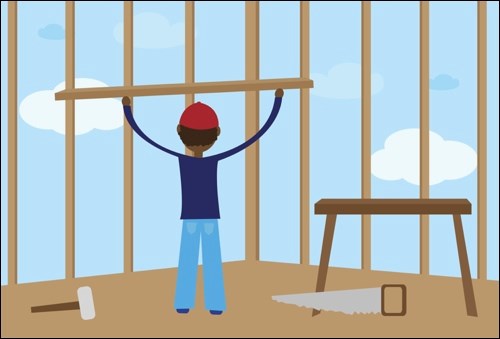VANCOUVER, B.C. — Housing is a generational tipping point in Canada. High prices drive wealth accumulation for many of our parents and grandparents while crushing the dreams of home ownership for younger Canadians, or weigh us down with heavy debts or high rental costs.
Here's what the parties would do if elected.
Conservatives - +$30 million/year
Starting in 2017, the Conservatives would increase from $25,000 to $35,000 the amount of tax-free money that first time home buyers can withdraw from their own RRSP savings to put towards their first home.
Who benefits: people who already had more than $25,000 saved in their RRSPs and were willing to roll those retirement savings into their first home.
Since younger Canadians earn thousands less for full-time work than in the past, have larger student debts and pay more expensive rents, many wouldn't have that kind of money saved in their RRSPs and so wouldn't be eligible.
Liberals - +$550'ish million/year
The Liberals would implement a National Housing Strategy targeting a wider range of people than the Conservative plan. The Strategy would draw from a $20 billion dollar "social infrastructure" investment over 10 years, but the Liberals haven't said how much money is specifically targeted to housing.
Estimate: The social infrastructure investment is for housing, seniors' facilities, child care, culture/recreational infrastructure. The budget in 2017 would be $1.7 billion. Given the four areas of focus, I estimate that one-quarter will go to housing, or $425 million. I added "ish" to our estimate in order to signal I'd prefer more concrete numbers to report.
With that $425 million-ish, the Liberals want to renew federal leadership in housing by building more housing units, refurbishing existing ones, renewing current co-operative agreements, and providing operational funding support for municipalities, including renewing support for so-called Housing First initiatives that help homeless Canadians find stable housing.
The Liberals would conduct an inventory of available federal lands and buildings that could be repurposed, and make some of this land available at low cost for affordable housing in communities where there is a pressing need.
The Liberals also promise $125 million per year to eliminate all GST owed on new capital investments in affordable rental housing and to provide tax incentives to increase and substantially renovate the supply of rental housing across Canada. However, it's unclear whether $125 million is enough to make a dramatic impact on the availability of rental stock.
Finally, similar to the Conservatives, the Liberals indicate they will create more flexibility for people to draw on their RRSP savings for the purpose of purchasing a home throughout their lives. At a modest cost of $5 million, this commitment could suffer the same deficiencies identified above.
Who benefits: Builders and owners of rental housing and those they serve, including low-income renters as well as those who can afford market rates; co-operative housing organizations and those they serve; municipalities and homeless Canadians; homebuyers with RRSP savings.
Overall, the Liberal plan may benefit the widest diversity of people, but the investment is lower (and unclear) compared to the Green plan below.
NDP - +$510 million/year; plus a one-time $500 million investment
The NDP plan seems focused largely on renters, aiming to restore federal funding for housing back to 1996 levels (before subsequent federal governments allowed Ottawa's contributions to social housing to slowly diminish).
This would include investments dedicated to renewing lease agreements with community co-op and social housing projects.
The NDP would also provide a one-time $500 million allocation for grants and loans to support non-profits and co-ops to access capital for the construction of affordable and market rental housing units, to incentivize the development of long-term purpose built rental housing.
Who benefits: Non-profit and co-operative housing organizations and the individuals and families they serve, including low-income renters as well as renters who can afford market rates.
Greens - +$1.3 billion/year
Like the Liberals, the Greens promise a National Affordable Housing Strategy, but it'd invest more money than any other party, with the money going to:
Building 20,000 new affordable housing units per year
Renewing 8,000 affordable housing units per year to sustain the existing stock.
The Greens would also provide rent supplements or shelter assistance for an additional 40,000 low-income households per year.
Who benefits: The Greens intend their Housing Strategy to address a continuum of needs: "from social housing for those in poverty or dealing with mental health and addiction problems, to First Nations, Metis, and Inuit housing crises, to the market failures depriving those with even a decent income of access to the affordable housing they need."
But so far, the overall language in the Green platform reveals that its primary housing priority is poverty reduction, emphasizing Housing First principles to respond to street homelessness.
Dr. Paul Kershaw is a policy professor in the UBC School of Population Health, and Founder of Generation Squeeze (gensqueeze.ca).
www.troymedia.com




